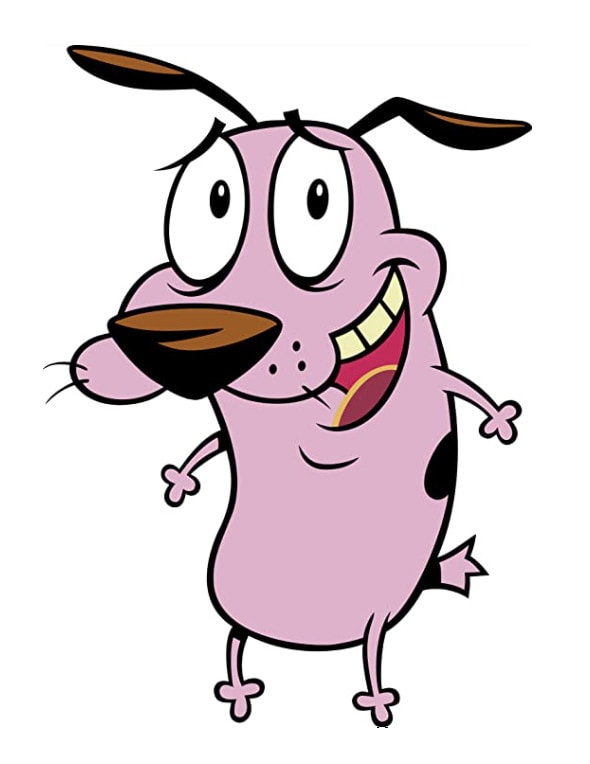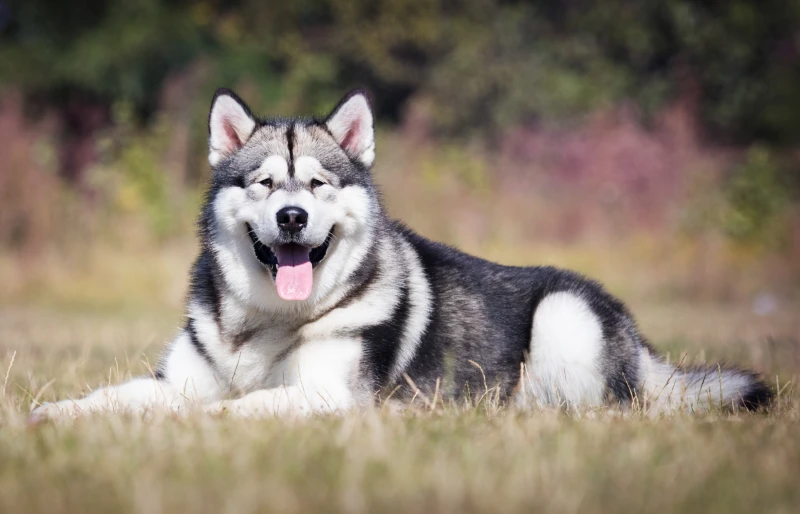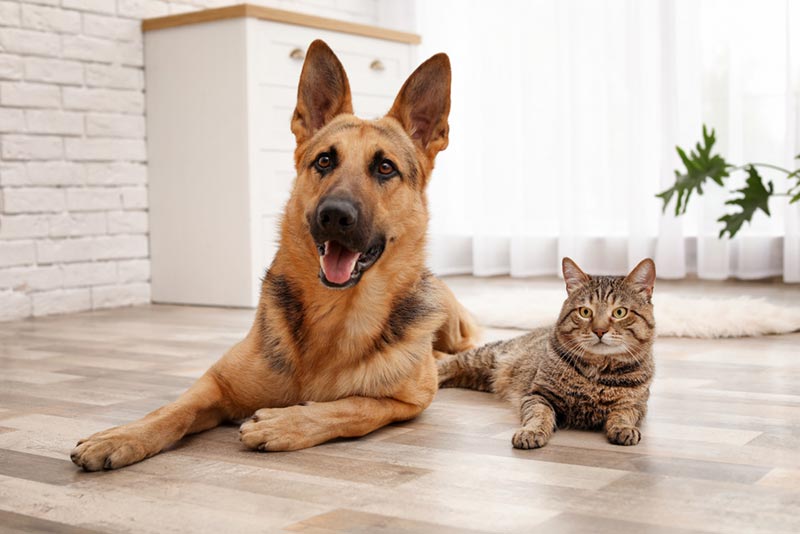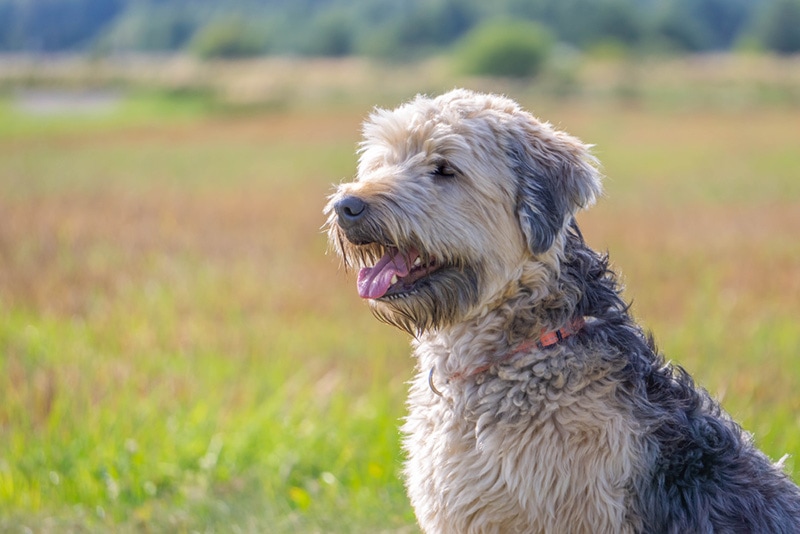What Kind of Dog Is Courage the Cowardly Dog? Fun Canine Facts

Updated on

Courage is the main character of the animated series “Courage the Cowardly Dog”. In the show, he plays an anxious, easily frightened dog who finds himself in a scary new home with his adopted mom Muriel (and her mean husband), who takes him in after he loses his parents (his parents aren’t dead, they’re just currently in outer space). Many fans of the show suspect that Courage is a mutt or a chihuahua, but Courage is actually a bright pink beagle.
Do you want a dog like Courage? If so, stay tuned and we’ll tell you everything you need to know about how to care for your own beagle.
How Do We Know That Courage Is a Beagle?
Courage is obviously a cartoon version of a dog, and we know that beagles aren’t pink in real life. So, we have to look at other physical characteristics of beagles to make this determination. For example, the beagle is a small dog. Courage is a small dog as well.
A beagle’s coat comes in two varieties: a “long” and a “short” haired beagle. Courage is a short-haired beagle. Lastly, Courage has brown ears and black markings on his back, just like real-life beagles.
We can also look at Courage’s personality to determine that he is a beagle. Although he is typically very anxious and frightened, which doesn’t really match the beagle’s personality, he is also very brave and loyal to his family. This trait is typical of beagles, and Courage can also be very vocal at times, trying to alert his family of danger, which is true of beagles as well.

History of the Beagle Breed
The history of the beagle breed dates back to the early 1500s when the Spanish Hounds were first imported to England, but it wasn’t until the mid-1800s that the beagle was recognized by the American Kennel Club as its own distinct breed. Beagles are thought to be descended from the wild foxhound, which in turn is thought to have originated from the Middle East and North Africa.
The beagle is one of the oldest breeds in North America. It is believed that English settlers brought the breed with them to America as colonization began in the 1700s. The beagle is one of the most popular breeds in the world today. It has become the best friend of man as well as a popular hunting and sporting dog.
Beagle Size & Temperament
The beagle is a small to mid-size, agile, and energetic hunting dog. Beagles are very intelligent and are excellent with children, which makes them perfect family pets. They are also very affectionate, loving, and loyal to their owners. They have a strong, high-pitched bark, which can be used as a form of protection or as a way to alert the owner to an intruder or danger.

Beagle Characteristics
The beagle is a sturdy, well-muscled dog with a deep chest, short legs and broad head. The beagle has long, silky hair on its head and ears that can range from dark to light in color. On average, beagles weigh between 15 and 25 pounds and stand about 13 to 18 inches tall at the shoulder. They come in a variety of colors and coat patterns, but the most recognizable is the reddish brown coat with the stark white chest. They also have white tips on their tails, which makes them easy to spot when they’re hunting in tall grass.
Common Beagle Health Problems
Beagles are not prone to many health problems and have a good life expectancy. Some of the common problems you might encounter include:
- Nail Infections: The beagle has very short, soft nails that can easily break or tear. It is important to keep your beagle’s nails trimmed and well-groomed to prevent pain and infection.
- Heart Problems: Beagles do not generally suffer from heart problems. However, they can develop a heart murmur or heart disease if they are bred with other dogs who have this problem.
- Hip Dysplasia: Beagles are prone to developing hip dysplasia. This is a condition where the hip joint is out of alignment and can cause lameness in the dog. Your veterinarian will be able to test your beagle for hip dysplasia.
- Teeth Problems: Beagles have a strong jaw that can make it difficult to remove their teeth. They also tend to have loose teeth and may need to have some teeth extracted.
- Eye Problems: There are several conditions that can cause redness, swelling and/or discharge from the eyes, and they vary in severity. They may be caused by an allergic reaction, infection or inflammation of the eye. If you have any of these symptoms, contact your veet as soon as possible.
- Ear Problems: Ear problems may be mild or severe. The most common ear problem is an ear infection, which is usually caused by bacteria. The beagle has long ears that sometimes trap moisture in the ear canal, where bacteria then grows. It’s important to keep your beagle’s ears clean and dry, especially during and after swimming or bathing.

Common Beagle Behavioral Problems
Beagles are intelligent, lively, and curious dogs. They love to learn new tricks and have a great personality. These dogs are excellent with kids and other animals. But, beagles can also be stubborn, mischievous, and willful. They will need the proper training and guidance to prevent behavioral problems.
Chewing
The most common beagle behavioral problem is chewing. Your beagle may be chewing on everything in sight, including furniture, clothing, shoes, and other items, especially if he’s a teething puppy. Because these dogs are so intelligent, they become bored and restless easily, and with no outlet for that energy, they can become destructive.
Solution
There are a number of options available to help manage your dog’s boredom. The first is an exercise program. This can be done in the form of walks or hikes, or even some type of agility. Dogs like to work off their energy, and getting them to do something physically challenging will keep them busy. The second is training. This can take many forms, from basic obedience training, to something more elaborate such as lure coursing. If a regimented training program is too much, your beagle will do just as well with regular walks, plenty of toys, and lots of love and attention.
Problem Barking
Beagles love to alert. It’s in their blood! They have a loud bark and a howl that seems too big to come from their small bodies. If not trained on when it’s appropriate to bark, you may find yourself with a yappy beagle on your hands.
Solution
If you have a dog who is barking too much or at inappropriate times, there are many things you can do to stop it.
- Correct the Environment: Some dogs bark because they feel lonely or are afraid of something. If this is the case with your dog, you will need to take some steps to ensure that he feels more comfortable in his environment. Once you have that sorted, you can move on to training-based solutions.
- Use Positive Reinforcement: The best way to train your dog is to use a combination of positive and negative reinforcement. When your dog is showing the behavior you want, you reward him with a high-value treat and a “good boy” or other reward command.
- Redirect When Necessary: When your dog is problem barking, correct them by refocusing their attention on you, and bringing them to a calm, quiet sit, then rewarding them. Eventually, with time and consistency, they’ll learn when it’s appropriate to bark!

Beagle Diet
A growing beagle needs about 55 calories per pound of body weight each day, and an adult beagle needs about 45 calories per pound, per day. Because beagles are short and stocky, they’re more prone to obesity than other breeds, especially if not fed and exercised properly.
For that reason, you should look for a food that has about 30% to 40% high-quality protein, and less than 15% fat. Look for foods made with meat, high-quality grains, and fruits and vegetables rather than one made mostly from filler and byproducts. Your vet will be able to recommend the perfect food, and amount to feed, based on your dog’s individual needs.
Beagle Grooming
The Beagle is a very clean dog. He sheds less than most dogs and can be groomed with just a brush, comb, and nail clippers. His coat is not prone to matts or tangles, so an occasional combing to remove shedding is usually all you need to worry about. What you do need to pay close attention to are your beagle’s nails. Beagles have smaller, thinner, more sensitive nails than many other dogs, and without proper care, they’re prone to splits, breaks, and painful infection. If you’re not sure how to groom a beagle, talk to your vet.
Conclusion
In conclusion, a beagle is a smart, playful, affectionate dog that is perfect for families with children. The beagle is a very active breed and needs lots of exercise and playtime. They can be stubborn, so you’ll need to be patient when training them. The beagle is a wonderful, loyal dog that gets along well with other animals and people. They are usually very friendly and affectionate, but they can also be shy and independent. With the right kind of training, care, and support, your beagle will become a true member of the family.
Featured Image Credit: Characters by Cartoon Network Studios, Warner Bros Television. All rights reserved to the copyright owners.












